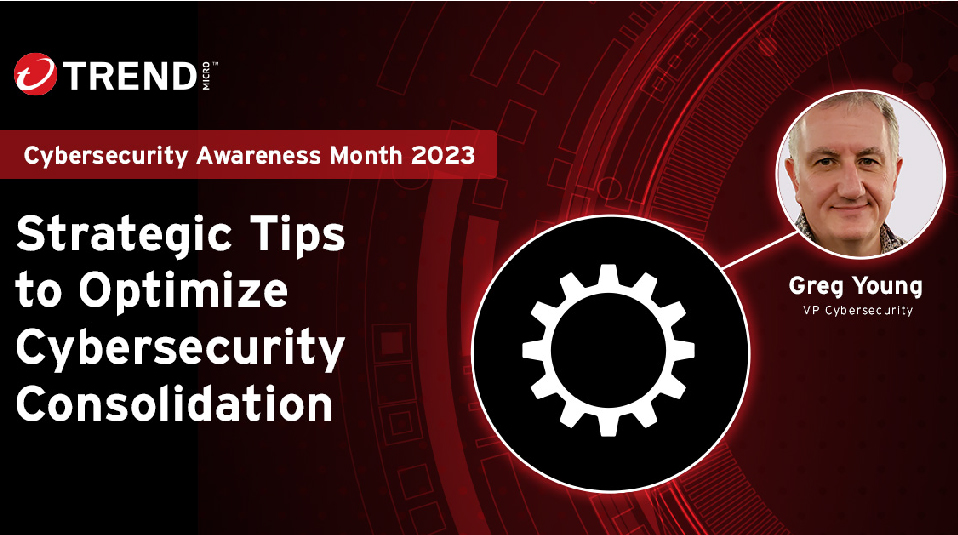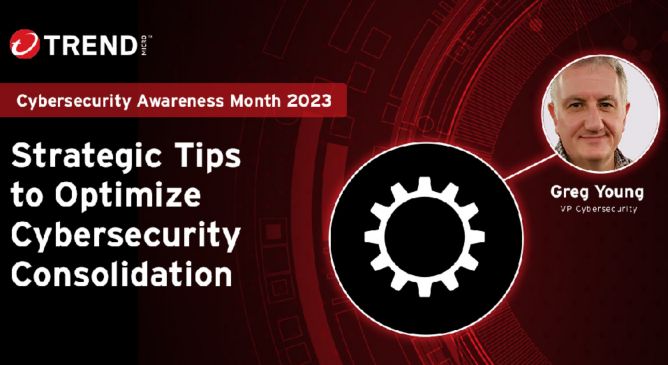Strategic Tips to Optimize Cybersecurity Consolidation

The ever-expanding enterprise attack surface has spawned a vast array of cybersecurity solutions tailored to specific risks and threats. That’s resulted in a chaos of consoles, data, and alerts that slows down security teams and compromises their ability to respond effectively to attacks.
To minimize complexity, many organizations are eager to streamline the overall number of security products and vendors they have to manage. CISOs know this kind of cybersecurity consolidation stands to make their teams more efficient, save money, and improve security outcomes. They also know it’s not as simple as it sounds.
To start with, no single vendor can meet every security requirement, meaning some diversity of solutions is inevitable. Legacy investments can’t just be tossed aside, especially not when existing tools are deeply embedded in security teams’ ways of working. But a consolidation strategy almost always means having an anchor set of core safeguards, usually those that are part of a platform. That platform needs to then be able to accept telemetry from 3rd party safeguards and things and send commands for those APIs that accept them.
There also has to be allowance for the uptake of new solutions as risks evolve. TechTarget suggests technologies and point tools will continue to be developed for multi-cloud security, remote access, and zero-trust requirements. It is also likely new tools will emerge to deal with AI-related security risks (and will be AI-based themselves).
What organizations need is a flexible, minimally disruptive path to cybersecurity consolidation. That demands two things: a platform that can support third-party integrations, and an incremental approach to simplifying the security environment.
Cybersecurity consolidation starts with a platform
One of the biggest problems stemming from today’s tool sprawl is that security operations center (SOC) teams have no centralized view of the enterprise threat surface. They have to switch constantly between multiple displays and dashboards to piece together what’s happening—often dealing with a deluge of redundant, uncorrelated alerts. That costs time and effort and makes it more likely that something significant will fall through the cracks.
A cybersecurity platform remedies this by simplifying and unifying the overall security environment, providing much-needed centralized visibility for better, more insightful reporting and risk-based decision making. Bringing the full environment into view also exposes duplicate, unused, and under-used technologies, adding value while helping reduce costs.
Automation is another big advantage provided by a consolidated platform, accelerating threat identification and response to give SOC teams a major efficiency boost. By integrating and accommodating a wide mix of technologies, and by providing a way to manage them all, the platform approach allows cybersecurity to contribute directly to enterprise digital transformation.
Adopting a platform also strengthens compliance with laws, regulations, and corporate policies by improving tracking and reporting, while increasing the accuracy of compliance assessments. Better visibility and better data both also contribute to improved communication and collaboration within the SOC and across the broader enterprise.
More agile and future-ready
Pursuing cybersecurity consolidation by adopting a unified platform positions organizations to deal with intensifying and emerging realities such as the lack of cybersecurity skills and the growing use of generative AI.
It’s well documented today that cybersecurity professionals are in short supply. More than half (54%) of the organizations surveyed for Trend Micro’s Top Cybersecurity Insights for CISOs said addressing cybersecurity skills gaps was a top challenge in 2023. That’s a problem for organizations with dozens of discrete security tools because more tools require more people to manage them. Compounding the challenge is the fact that many point solutions demand specialized expertise, which is even scarcer than generalized cybersecurity knowledge.
By simplifying the environment, a consolidated cybersecurity platform reduces headcount requirements and minimizes the need for tool-specific expertise. Incorporating automation and next-wave generative AI tools furthers the advantages by speeding up analysis and problem-solving activities—freeing up senior people to focus on high-value work while equipping less-senior staff to contribute more to substantively to security operations. People shouldn’t be the API, and flipping between even more consoles is not a viable consolidation plan.
What’s the best way to tackle cybersecurity consolidation?
As with any major technology shift, the ideal approach to cybersecurity consolidation is an incremental one, migrating in well-planned stages to keep disruption to a minimum and maintain the strongest possible security posture.
A cybersecurity platform that supports third-party integrations is essential to this because it allows for the ongoing use of already-deployed tools and the adoption of new ones as required. Security teams can gradually unify their tools, streamlining and simplifying at their own pace while grabbing quick wins by working faster and more efficiently from the get-go.
A few prerequisites may be needed to proceed this way. A recent TechTarget article advises establishing a modern, standards-based security architecture based on zero trust as the foundation for any future consolidated cybersecurity environment. That same piece says maintaining replicable, scalable processes, addressing human skills requirements, and basing strategic technology decisions on the organization’s unique context and needs are also ‘must-do’ activities. Adopting the right platform with openness to accommodate third-party solutions helps tick all of these boxes.
Creating the conditions for security teams to deliver
The external pressures on CISOs and their teams aren’t going to ease up anytime soon. Threats will continue to evolve, multiply, and become more sophisticated. The attack surface will keep growing and becoming more complex.
Simplifying the security environment through cybersecurity consolidation allows organizations to take some control back, and to put their teams on the best footing to deal with those external realities.
Moving to a unified platform provides better visibility and speeds up threat detection and response while reducing silos. Support for third-party integrations makes it possible to migrate in a staged, achievable way by maintaining relevant legacy tools and minimizing disruption and overwhelm.
Next steps
For more Trend Micro thought leadership on cybersecurity consolidation, check out these other resources:
Read More HERE




